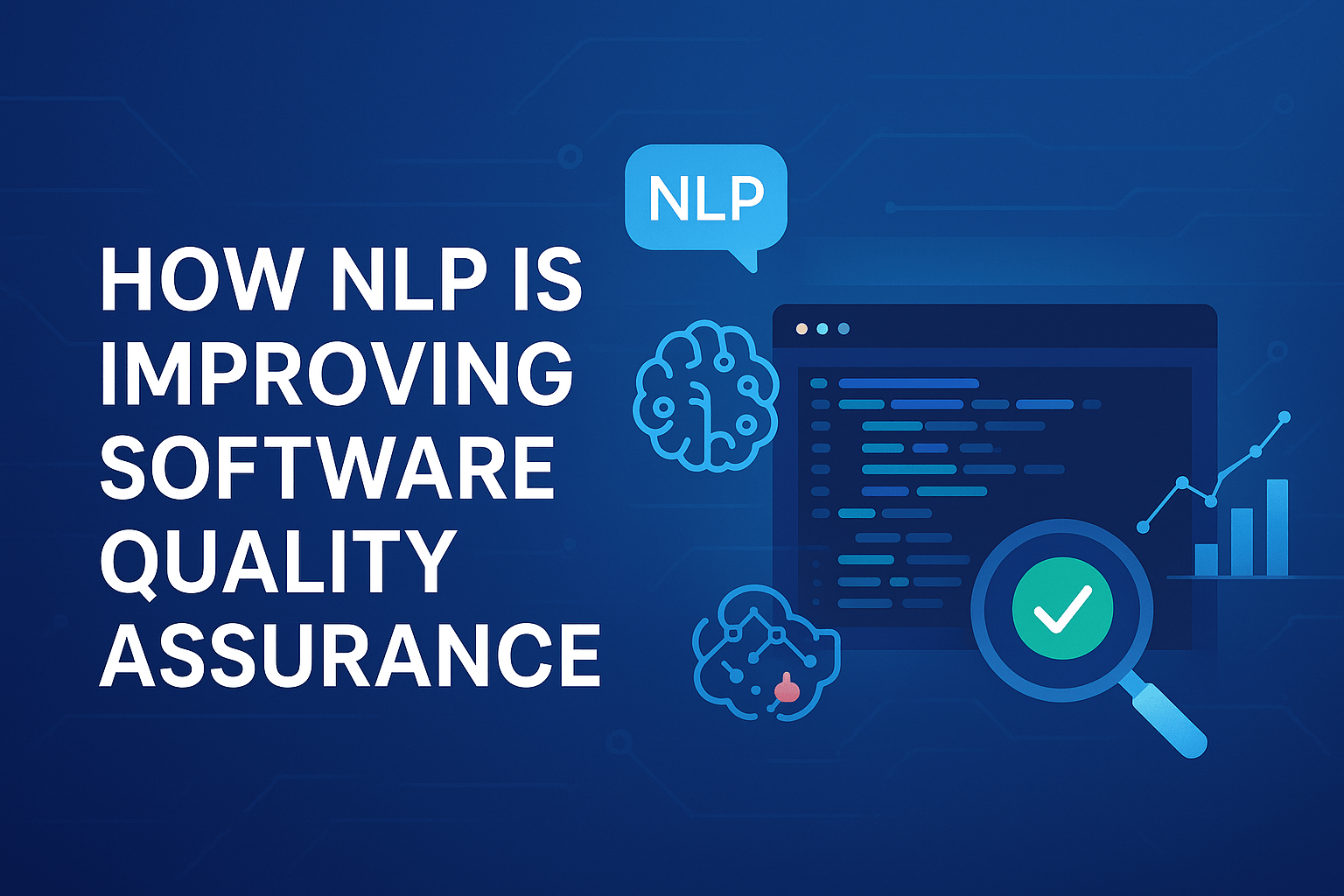Introduction
Delivering high-quality software is more critical than ever. With faster release cycles, increasing code complexity, and rising customer expectations, traditional QA approaches often struggle to keep pace. Enter Natural Language Processing (NLP)—a branch of AI that allows machines to understand and interpret human language.
In recent years, NLP has transformed software quality assurance (QA) by making test case creation, defect detection, and test automation smarter and faster. According to MarketsandMarkets, the global NLP market is projected to reach $68.1 billion by 2028, growing at a CAGR of 32.5%, highlighting its rapid adoption across industries including software testing.
How NLP Enhances QA
1. Automated Test Case Generation
Writing test cases is time-consuming. NLP-driven tools can analyze requirement documents or user stories written in plain English and convert them into executable test scripts.
- This reduces manual effort and ensures that test cases are closely aligned with business requirements.
- For example, AI-powered platforms like Testim.io and Tricentis already use NLP features to improve test coverage.
2. Smarter Defect Detection
NLP models can analyze bug reports, commit messages, and logs to detect recurring issues and prioritize them automatically.
- Research published in IEEE Software highlights that NLP-based defect prediction models improve accuracy by 10–15% compared to traditional statistical methods.
3. Improved Test Automation with Conversational Interfaces
Instead of coding, QA engineers can use natural language commands to create, run, and manage automated tests.
- According to Gartner, by 2026 more than 80% of software engineering organizations will use AI-enabled testing tools, many powered by NLP.
4. Faster Requirement Traceability
NLP can map requirements to test cases and flag gaps in coverage. This ensures critical business rules are tested, reducing the risk of missed defects during production.
5. Enhanced QA Documentation Analysis
QA teams often deal with thousands of test scripts and requirement docs. NLP tools make it easier to search, classify, and extract insights—reducing review time significantly.
Real-World Business Impact
- Speed: NLP-driven test automation can reduce test creation time by up to 50%, accelerating release cycles.
- Accuracy: AI-powered defect detection minimizes false positives, improving QA reliability.
- Scalability: Teams can handle larger test suites without proportional increases in effort.
- Customer Experience: Fewer bugs reaching production means higher customer satisfaction and lower churn.
Challenges to Keep in Mind
While NLP offers significant benefits, businesses should also consider:
- Training data requirements: NLP models need quality datasets.
- Complexity of domain-specific language in QA documents.
- Integration with existing QA tools for smooth adoption.
Organizations adopting NLP must ensure proper governance and skilled oversight to avoid over-reliance on automation.
Conclusion
NLP is reshaping how organizations approach software quality assurance. By automating repetitive tasks, improving defect detection, and enabling conversational test automation, it empowers QA teams to deliver faster, more reliable software.
As Gartner notes, AI-driven testing (powered by NLP) will soon become mainstream. Businesses that embrace this shift today will be able to release software at higher speed, with fewer bugs, and with confidence.
👉 If your organization is looking to adopt next-generation QA solutions, our team can help you integrate NLP-powered testing strategies tailored to your business needs.







